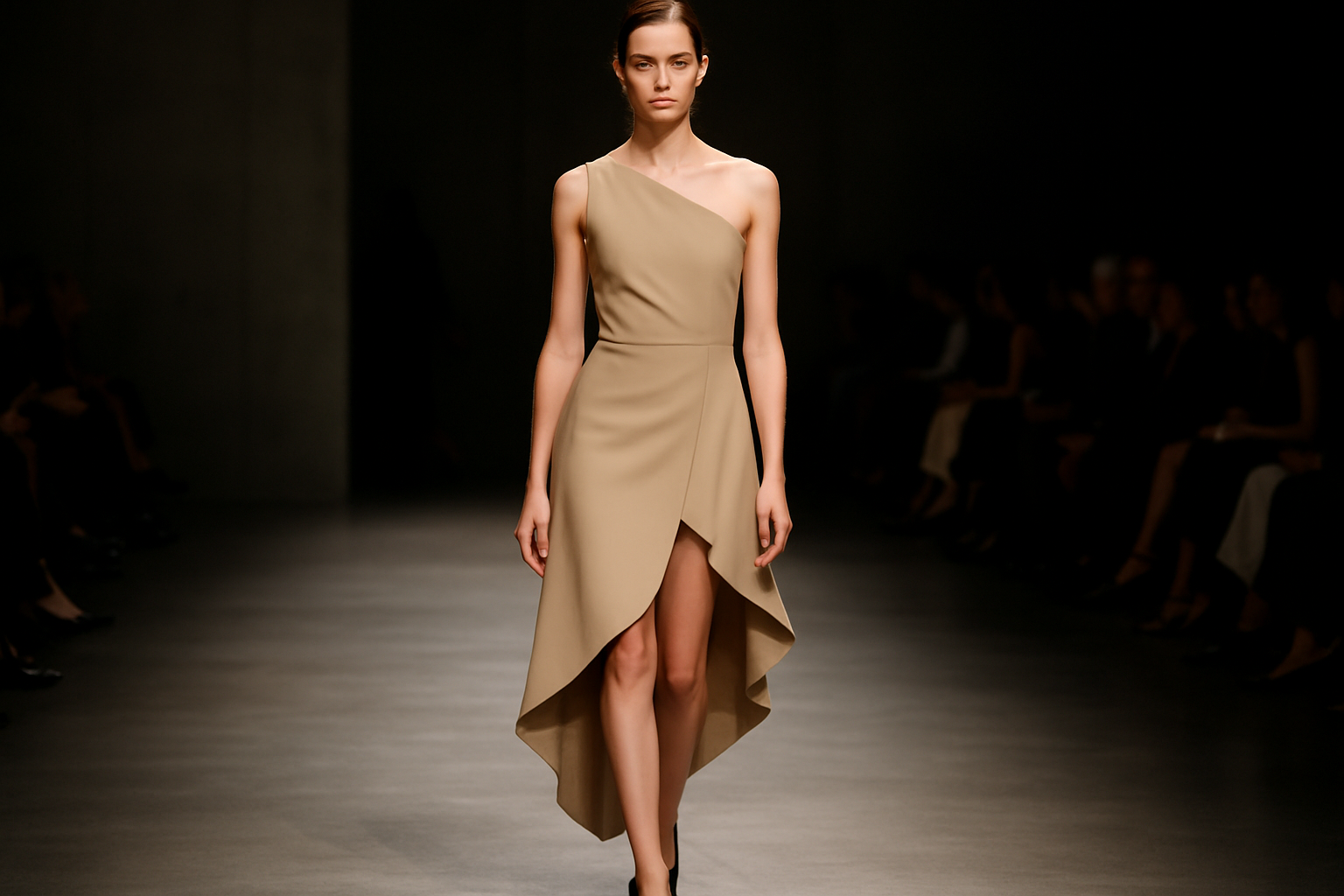The Allure of Asymmetrical Hemlines: A Fashion Renaissance
In the ever-evolving world of fashion, asymmetrical hemlines have emerged as a captivating trend that challenges traditional silhouettes and adds a touch of avant-garde to everyday wear. This uneven edge has taken the fashion world by storm, gracing runways, red carpets, and street style alike. But what makes this seemingly simple design element so alluring? Let's dive into the world of asymmetrical hemlines and explore their rising popularity in contemporary fashion.

The Origins of Asymmetry in Fashion
Asymmetry in clothing design can be traced back to ancient civilizations, where draped garments often featured natural asymmetrical elements. However, the deliberate use of asymmetrical hemlines as a fashion statement gained prominence in the 20th century. Avant-garde designers like Yohji Yamamoto and Rei Kawakubo of Comme des Garçons pioneered the use of asymmetry in their collections, challenging Western notions of symmetry and balance.
In the 1980s, designers like Vivienne Westwood incorporated asymmetrical elements into punk-inspired fashion, further popularizing the trend. The 1990s saw a more streamlined approach to asymmetry, with minimalist designers creating sleek, angular silhouettes that played with proportion and line.
The Psychology Behind Asymmetrical Appeal
The human eye is naturally drawn to symmetry, which makes asymmetrical designs particularly intriguing. This visual tension creates a sense of movement and dynamism, even when the wearer is standing still. Psychologically, asymmetry in fashion can be associated with creativity, individuality, and a willingness to break from convention.
Asymmetrical hemlines also have the power to flatter various body types by creating visual interest and drawing the eye to specific areas. For example, a dress with a diagonal hemline can elongate the legs and create a slimming effect, while an asymmetrical top can balance out proportions and add dimension to the upper body.
Contemporary Interpretations of Asymmetrical Hemlines
Today’s fashion landscape sees asymmetrical hemlines implemented across a wide range of garments and styles. High-end designers and fast-fashion brands alike have embraced this trend, offering consumers diverse options to incorporate asymmetry into their wardrobes.
One popular interpretation is the high-low hem, seen on dresses, skirts, and even tops. This style features a shorter front and a longer back, creating a cascading effect that adds drama and movement to the silhouette. Another variation is the side-slit hem, which introduces asymmetry more subtly while still offering a peek of leg and enhancing mobility.
Asymmetrical cutouts are also gaining traction, with designers strategically placing openings to create visually interesting negative spaces within garments. This approach allows for a play on skin exposure without compromising overall coverage.
Styling Asymmetrical Pieces for Everyday Wear
While asymmetrical hemlines may seem daunting at first, they can be surprisingly versatile when it comes to everyday styling. The key is to balance the asymmetry with more structured or symmetrical pieces to create a cohesive look.
For a casual daytime outfit, pair an asymmetrical hem top with straight-leg jeans and sneakers. The contrast between the flowing top and the structured denim creates an effortlessly chic ensemble. In a professional setting, an asymmetrical pencil skirt can add interest to a classic button-down shirt and blazer combination.
Evening wear is where asymmetrical hemlines truly shine. A floor-length gown with a thigh-high slit or a cocktail dress with an uneven hem instantly elevates the look, adding an element of intrigue and sophistication.
The Future of Asymmetrical Hemlines in Fashion
As fashion continues to evolve, asymmetrical hemlines are likely to remain a significant trend. Designers are experimenting with new materials and techniques to create even more innovative asymmetrical designs. 3D printing and laser-cutting technologies are opening up possibilities for intricate, precisely engineered asymmetrical patterns that were previously impossible to achieve.
Moreover, the growing emphasis on sustainability in fashion aligns well with asymmetrical designs. These unconventional shapes can be used to minimize fabric waste during the cutting process, making them an attractive option for eco-conscious designers and consumers alike.
Mastering the Art of Asymmetry: Expert Tips
-
Balance is key: Pair asymmetrical pieces with more structured items to create a harmonious look
-
Consider your proportions: Use asymmetrical hemlines to highlight your best features and create flattering silhouettes
-
Experiment with layers: Layering asymmetrical pieces can create interesting depth and texture in your outfit
-
Accessorize wisely: Keep jewelry and accessories minimal to let the asymmetrical design take center stage
-
Play with fabrics: Different materials can drastically change the effect of an asymmetrical hemline, from flowing silks to structured wool
As we continue to push the boundaries of fashion, asymmetrical hemlines stand out as a testament to the industry’s creativity and innovation. By challenging our perceptions of balance and proportion, these designs invite us to rethink how we dress and express ourselves through clothing. Whether you’re a fashion risk-taker or simply looking to add a touch of intrigue to your wardrobe, embracing asymmetrical hemlines offers a fresh and exciting way to elevate your style.





